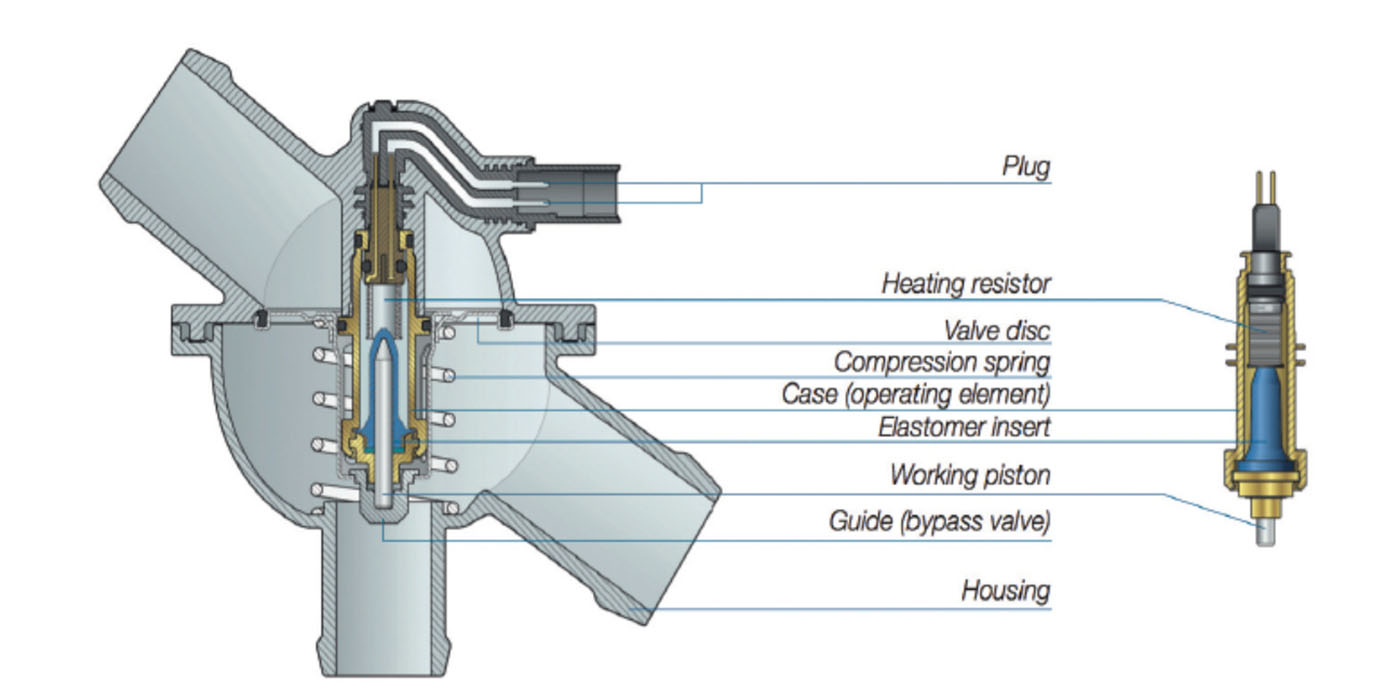When it comes to returning brake rotors to “like new” condition, it is a two-step process that can be different every time. If the vehicle has a pulsation symptom or complaint, it pays to perform a diagnostic check before machining the rotor in terms of both time and additional parts sales.
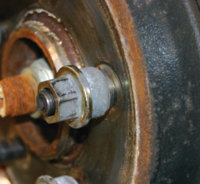
Initial Check
1. Hold the rotor in place with the lug nuts. Conical washers may be required on some vehicles.
2. Measure the rotor’s thickness and determine if it can be machined. If no out-of-the-ordinary problems are present, you can now proceed to machining the rotor.
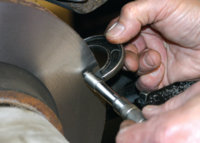
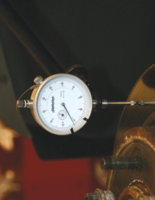
Symptom-Based Diagnosis
1. If the vehicle has a pulsation problem or other unusual symptoms, it may be necessary to perform a pre-machining diagnosis with a dial indicator to determine if machining the rotor will resolve the problem. This stage can save time by isolating the problem.
2. At this point on the rotor, it has .005” of runout. Mark this point on the hub of the rotor and the closest lug bolt (indexing). Reinstall the rotor with the high spot 180º from the previous position of the hub and measure the runout. This check can give you an idea if the runout is in the rotor or in the hub.
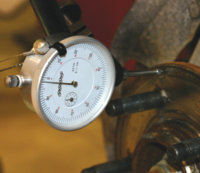
3. Clean the hub’s mounting face.
4. Up to .009” of lateral runout over factory specification can be corrected using a tapered runout correction plate that fits between the rotor and flange. These can be used alone or with an on-the-car brake lathe. Using these shims in conjuction with an on-the-car brake lathe can minimize the amount of material removed and create a more thermally balanced machined rotor.
5. Measure the runout at the hub’s face with the dial indicator. The amount of runout at the hub’s flange is a constant and cannot be machined out, only replacement can resolve the problem.
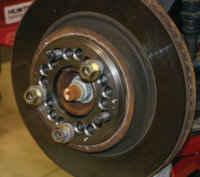
Using an On-the-Car Lathe
1. Mount the on-the-car lathe’s adapter to the rotor. Make sure the adapter is right for the vehicle and it is torqued down properly.
2. Every on-the-car lathe has its own lateral runout compensation method. Alway follow the recommended procedures.
3. Set the cutting bits to the appropriate cutting depth.
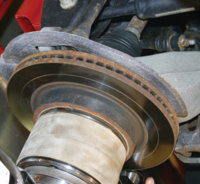
4. Once the cutting depth is set, bring the cutting head to the inside edge of the rotor’s surface.
5. Start the final cut. On some lathes, you can adjust the speed of the spindle and crossfeed.
6. Make sure you catch all the metal particles.
7. Measure the thickness of the rotor at three points.
• If you performed a “symptom-based diagnosis,” you might want to confirm that there is no runout. Always measure at three points.
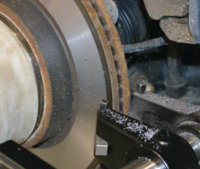
Final Assembly
1. Clean the rotor to remove all metal particles from the surface. Install the new pads and attach the caliper.
2. Reinstall the wheel with either a torque stick or torque wrench.













